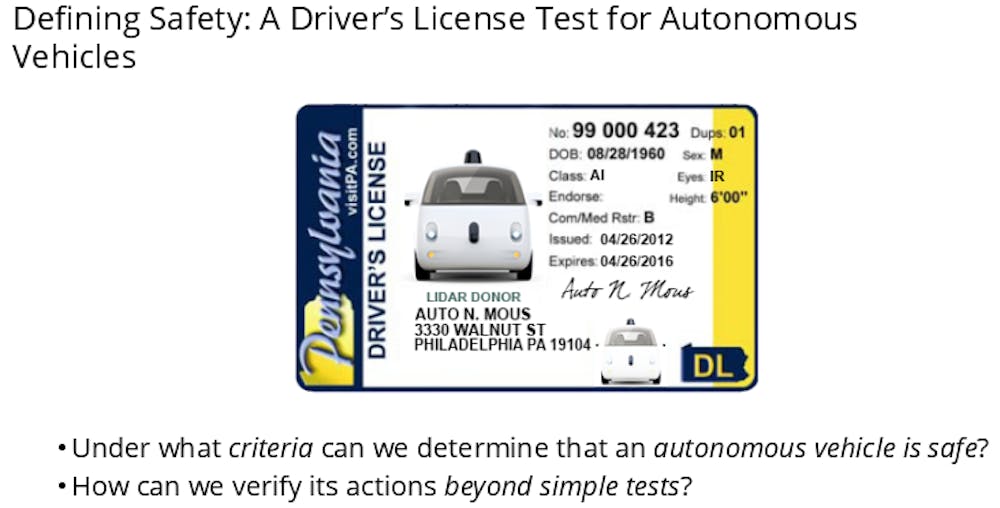Penn and Carnegie Mellon University researchers received a five-year $14 million grant from the U.S. Department of Transportation to establish a University Transportation Center, which aims to use technology, policy and planning to ensure safe and efficient mobility of people and goods in the 21st century.
The team received one of five grants awarded by DOT to establish the center, which will be named Mobility21. The center will function as an extension of the team’s original center, called T-SET, which was funded in 2013 for $2.8 million per year for three years and and focused more on the safety component of transportation, as opposed to the efficiency of mobility.
“It shows that the work that we’ve been doing is really high impact, both in the research space and also in practice,” said Megan Ryerson, research director of Mobility21 and professor in both the School of Design and the School of Engineering and Applied Science.
“One of the big focus areas of all of the DOT transportation centers is to have an impact on the real life transportation system — to make it more safe and efficient, and that’s really exciting,” she said.
The team’s 12 investigators come from the Engineering School, the School of Design, the Perelman School of Medicine, Penn Law School and the Wharton School at Penn and each take on interdisciplinary projects addressing important questions that may arise with an increase in innovation in transportation. Projects tackle issues that stem from ground transportation, like pedestrian traffic fatalities, to those that arise from navigating air space, as companies like Amazon and Google begin to transport goods via drones.
Penn Director of Mobility21 and Engineering professor Rahul Mangharam’s primary research centers on what a driver’s license for an autonomous car should be and how to make them safe so that people can “trust and release control to this decision making engine.”
“This is a very scary situation because there have been a lot of accidents,” Mangharam said. “Even though [the autonomous vehicles] have driven millions of miles in a driverless manner, they haven’t even certified a simple lane change.”
But the prospect of switching over to autonomous vehicles has implications in other fields as well. Mangharam works with Penn Law professor and expert on insurance law Tom Baker to address whether or not the driver can still be fully liable in accidents with cars that are mostly autonomous.
Ryerson looks at the implications of increased automation on the way people take long distance trips. Instead of taking flights, people are likely to choose the more efficient, inexpensive route, especially when the driverless format is still conducive to a more relaxing trip, and the driver has the option of texting or napping. She then develops models of the intercity transportation system to make the entire system more efficient and also to prepare for possible congestion.
A professor of City and Regional Planning at the School of Design, Erick Guerra, has focused some of his research on better understanding what causes traffic fatalities and hopes to figure out how cities and local governments can respond in order to reduce fatalities. The team works closely with officials in Pennsylvania state government and the Philadelphia Mayor’s Office, which has adopted the Vision Zero mentality, placing responsibility for traffic fatalities on the collective, rather than the individual, and striving to eliminate traffic fatalities entirely.
“As a University of Pennsylvania alumna, I am thrilled that the U.S. Department of Transportation has again tapped the university for a role in insuring the state remains a transportation leader,” the Secretary of Pennsylvania’s Department of Transportation and 1993 School of Design graduate Leslie Richards said in an email statement. “This latest designation means the University of Pennsylvania will continue to play a leading role in shaping the future of transportation in Philadelphia and across the state.”
The team said they hope the center will function as a focal point for the diversity of research at Penn and continue to engage students in the Penn community from a variety of different schools. Mobility21 plans to do this, in part, at a consortium meeting on Jan. 31, where it will bring together researchers and officials involved in transportation to help hone the research agenda.
“We have researchers that are hungry for research questions that have real applications, and people at the Mayor’s office, CVRP, at SEPTA have real problems that they’re facing,” Ryerson said. “So the goal is really to bring people together to share problems and solution methods and [figure out] how we can organize our research in a way that is most beneficial to mobility and safety in Philadelphia, in Pennsylvania and then more broadly.”









